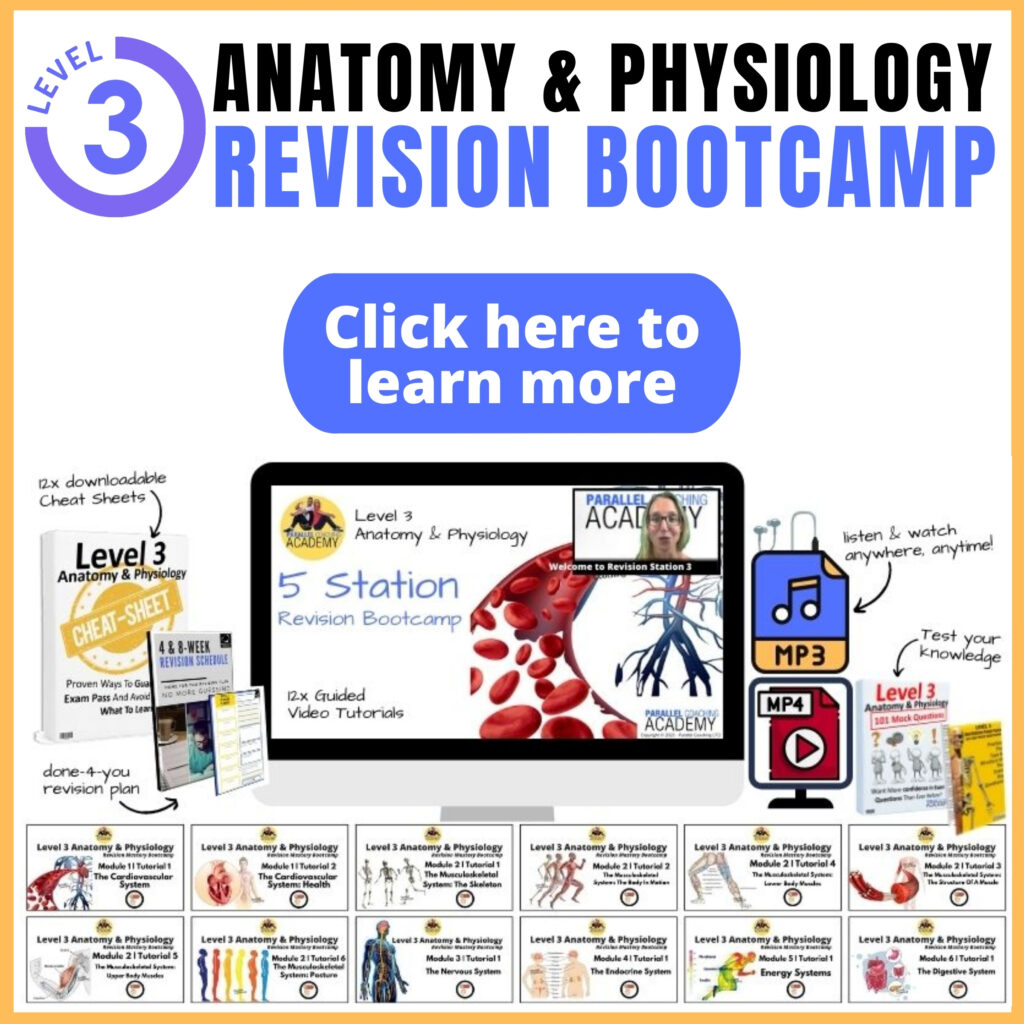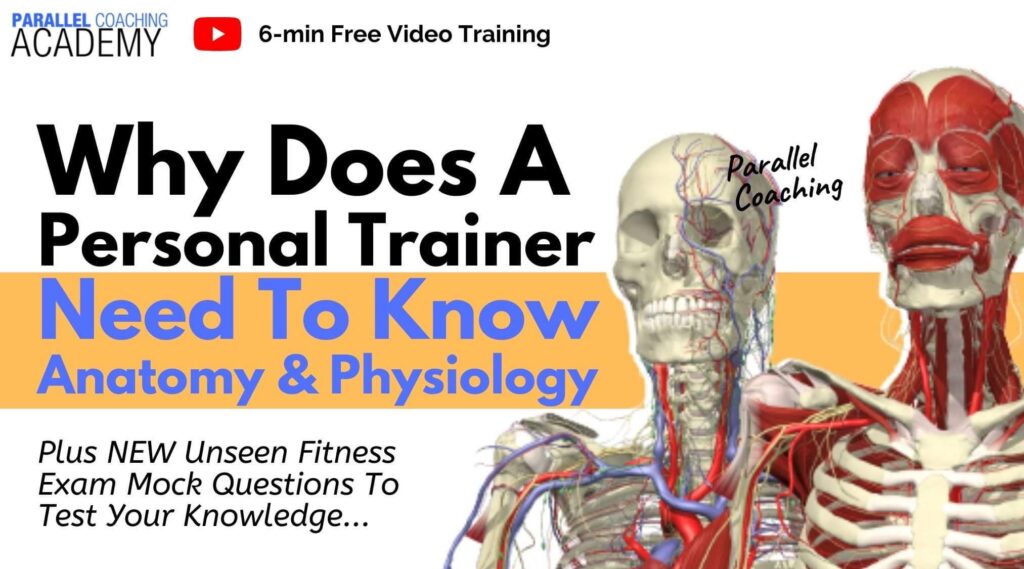Today’s video and blog will explain why it is important to understand Anatomy and Physiology as a Personal trainer. You’ll also learn how your anatomy knowledge links to your ability to plan and get results with clients every time.
If you are struggling with Anatomy and Physiology revision, then knowing WHY you need to know it, will help you value the learning and link it to your end outcome of training clients.
At the bottom of this blog, you’ll also find three mock questions to test your knowledge
Watch: Why Does a Personal Trainer Need To Know Anatomy and Physiology?
The PT Syllabus
Firstly, level 3 anatomy and physiology knowledge has always been part of the level 3 Personal Trainer syllabus. This is not because the awarding bodies wanted to give you an exam, but because of it’s importance in understanding other concepts in the PT syllabus.
Anatomy and Physiology knowledge is the backbone of your PT knowledge
How can you understand what intensity to plan your client’s cardiovascular training session if you don’t understand energy systems
You can’t understand which exercises to programme if you don’t know which muscles create a certain joint action
And you can’t advise your clients of nutritional changes if you don’t understand digestive processes and energy requirements.
The Mechanic Knows About Car Parts
Anatomy is the study of parts of the human body
Physiology is the study of the function of those parts
A PT’s main role is to prescribe movement and lifestyle advice to help a client make changes in their body. It is important for a PT to understand the parts of the body and how they all work together.
This is much like how a mechanic needs to know about all car parts and how they work together.
When taking your car to a mechanic to get fixed, you’d expect the mechanic to have a good understanding of car parts and how they work together. You expect the mechanic to be able to find a solution based on this knowledge.
The same applies to you as a Personal Trainer, before prescribing a series of exercises, variables, intensities and training programmes, you need to know how the body works and all the parts of the body.
Results Come From Anatomical and Physiological Adaptation
When a client approaches you as a Personal Trainer, they are asking you to help them achieve a goal. Goals include:
- Weight loss/ Fat loss
- Muscle gain
- Endurance
- Improved fitness / Vo2 Max
- Faster speed
- Increased strength
- and many more
The achievement of the goal is reliant on making anatomical and physiological adaptations. Without understanding these adaptations, a Personal Trainer can only rely on tactics, and cannot guarantee the achievement of their goal.
Having an understanding of anatomy and physiology means you can pick the right training variables, cv/rt biases, intensities, durations and training systems.
For example, you know a speed goal, requires activation of the Creatine Phosphate energy system, which is an intense cardiovascular exercise for short durations (up to 10 secs) and matched with low rep ranges in resistance training.
All systems work together
Each system within the body works together. The cardiovascular system work with the respiratory system, the nervous system, and the muscular system. Therefore as a PT you need to know how a training stimulus has an impact on the entire anatomy and physiology of the clients body.
Once you know this, you can create programmes and serve your client in a much better way to ensure they are moving forward safely and effectively towards their goals
Test your knowledge with 3 Mock Questions
Look at the Anatomy and Physiology Mock questions below and jot down your answer on scrap paper or as a note on your phone.
Then scroll down to reveal the answers.
1) What is the name given to the study of the parts of the human body
A. Doctorate studies
B. Anatomy
C. Physiology
D. Pathology
2) Production of Adenosine Tri-Phosphate is the main aim of which anatomical and physiological system?
A. Cardiovascular
B. Endocrine
C. Respiratory
D. Energy
3) Achieving overload in the range of 8-12 repetitions will create what adaptation?
A. Increased speed
B. Increased atrophy
C. Reduced speed
D. Increased hypertrophy
Answers:
Q1: Answer = B
Q2: Answer = D
Q3: Answer = D
If you want more mock questions like this, then you can download more Free Mock Questions: DOWNLOAD NOW
Need More Help with your Level 3 Anatomy Revision?
For Trainee FITPROS Taking Their L3 Anatomy & Physiology Exam.
Learn, Revise & Pass Your Level 3 Anatomy & Physiology Exam In Under 10-hours
(Without Having To Spend Hours Revising Or Feeling Overwhelmed)
If you want to get your revision structured, learn everything you need to know, and feel confident on exam day, then click the link below:

Dedicated to More
Hayley “Why Does a Personal Trainer Need To Know Anatomy and Physiology?” Bergman
Parallel Coaching
P.S. You can also find us on the following platforms:
Instagram: Follow Now
Facebook: Like Our Page
Twitter: Tweet Us
YouTube: Subscribe Here
More Revision Blogs: HERE

